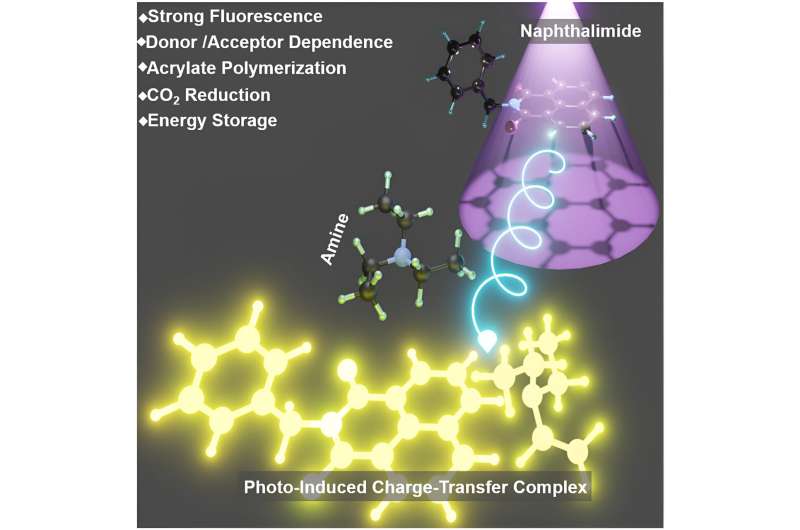This article has been reviewed according to Science X's editorial process and policies. Editors have highlighted the following attributes while ensuring the content's credibility:
fact-checked
peer-reviewed publication
proofread
Researchers discover photo-induced charge-transfer complex between amine and imide

A research team led by Prof. Zhang Guoqing from the University of Science and Technology of China (USTC) of the Chinese Academy of Sciences (CAS) has discovered a highly reactive photo-induced charge-transfer complex (PCTC) between amine and imide. Their findings are published in the journal Chem.
Charge transfer between molecules, a critical process in both natural and synthetic systems, plays a fundamental role in photosynthesis, respiration, and various organic synthesis and energy conversion applications.
Despite extensive research, creating stable, light-responsive charge-transfer complexes in artificial systems remains challenging. The discovery of PCTCs addresses this challenge, offering new insights into complex photochemical processes.
The researchers first discovered that aromatic imides and alkyl amines, which did not interact significantly in their ground state, form stable PCTCs when exposed to UV light. This interaction resulted in a highly fluorescent complex resembling a Meisenheimer complex.
The use of various spectroscopic techniques, including high-resolution mass spectrometry and time-resolved spectroscopy, confirmed the formation and stability of these complexes.
The researchers conducted a series of experiments to explore the formation mechanism. They observed that the interaction between naphthalimide and triethylamine in solution resulted in no significant changes in the absorption or emission spectra in the absence of light.
However, upon UV irradiation, new spectral features emerged, indicating the formation of the PCTC. These features included a distinct absorption band and enhanced fluorescence, which were absent in the individual components.
Moreover, researchers applied PCTC to initiate the polymerization of acrylic esters under UV light, demonstrating its potential in creating new polymeric materials with unique properties. Additionally, the complex showed efficacy in reducing carbon dioxide, a crucial reaction for addressing environmental challenges and developing sustainable energy sources.
One of the most intriguing applications of the PCTC was its ability to store UV energy and release it in the dark. This capability enabled processes traditionally dependent on continuous light exposure to proceed in the absence of light.
The discovery of highly reactive PCTCs between amines and imides under UV light not only enhances our understanding of photo-induced charge-transfer processes but also opens up new avenues for practical applications in polymer science, environmental technology, and energy storage.
More information: Wenhuan Huang et al, Trapping highly reactive photoinduced charge-transfer complex between amine and imide by light, Chem (2024). DOI: 10.1016/j.chempr.2024.05.005
Journal information: Chem
Provided by University of Science and Technology of China





















